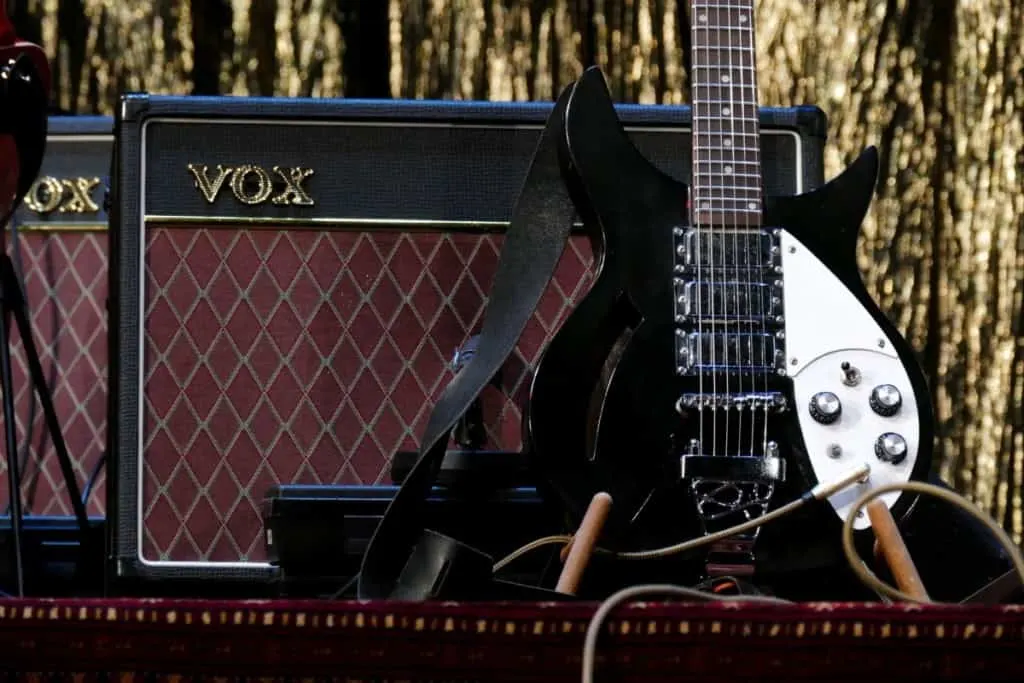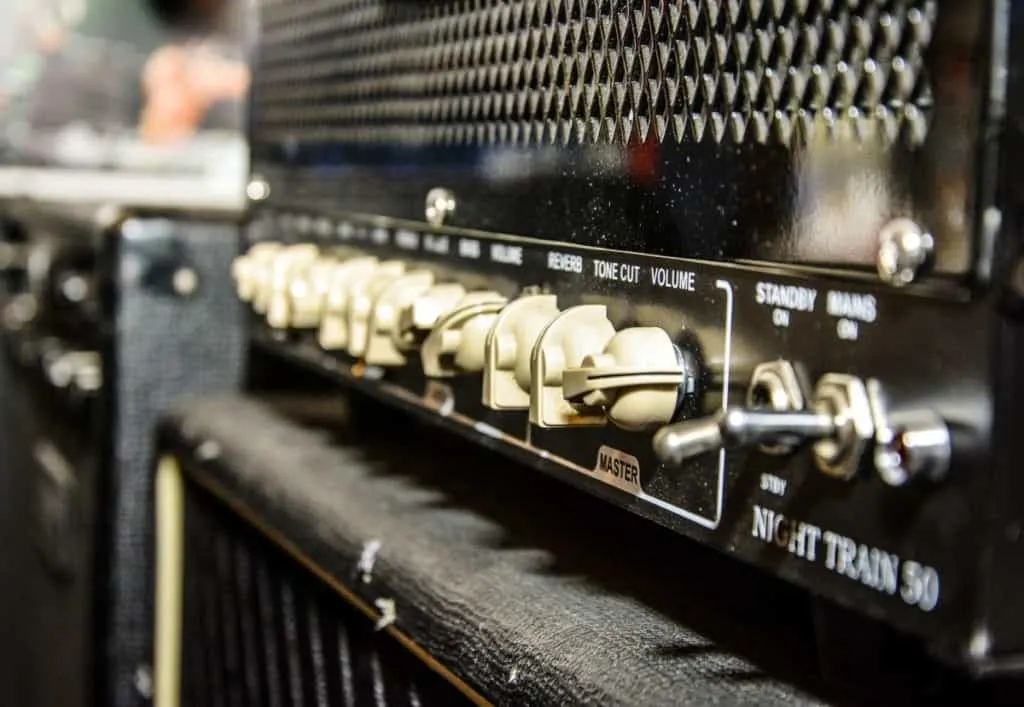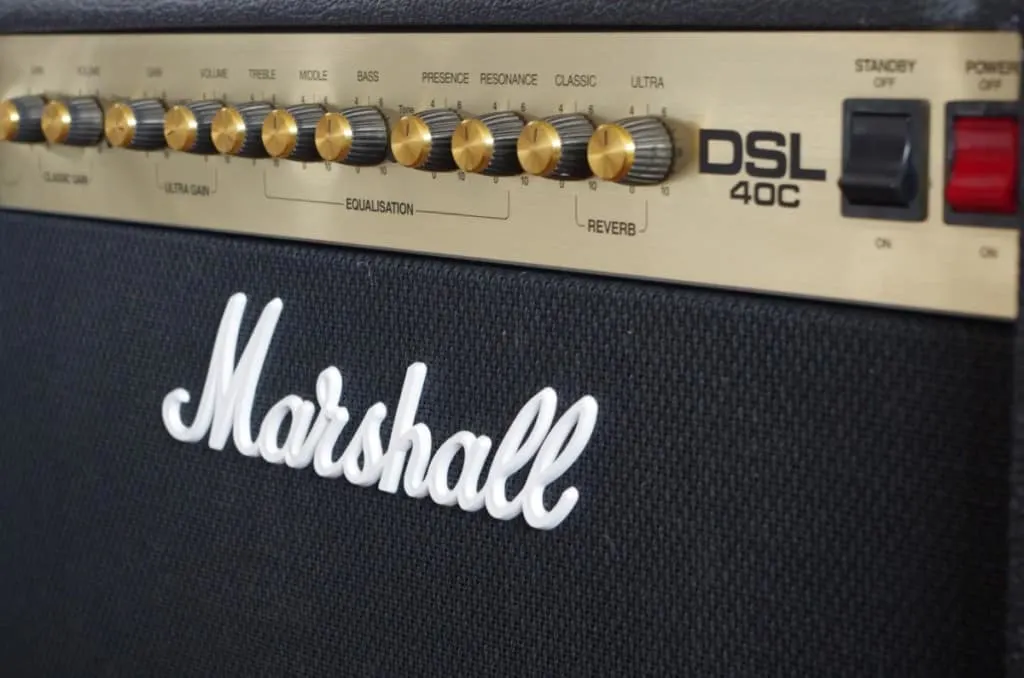Are you a guitar player? Have you ever heard the expression amplifier headroom before and wondered what it is?
It seems to be the Holy Grail for some genres while it is an undesirable characteristic for others. Truth be told, it can be a double-sided edge for some of us. As the saying goes, you can only know which one it is for you once you know exactly what it is.
So, what is amplifier headroom?
Amplifier headroom is the amount of power that an amplifier is able to generate before it starts overdriving. Overdriving means adding gain to the signal, natural gain coming from either the preamp, or the power amp section, or both. In other words, amplifier headroom is just how loud and clear can an amplifier be naturally.

Now you have a better idea of what it is, but do you know how to achieve it?
Amplifier Headroom Is The Opposite To Gain
Back in the day when the first guitar and bass amplifiers started being built, headroom was not at all a worry for most artists.
In fact, what became more sought-after was gain to play rock and roll. This natural gain that became so famous in the late 60s came from playing amplifiers really loud.
Actually, it was Pete Townshend from The Who who was the first one to slice the cone of the speaker slightly with a razor blade to get it to distort further because of the rattling noises.
Back in those days, headroom was a problem.
Marshall and Fender were coming up with these huge amplifiers so you could play loud but guitar players who were into rock n roll wanted that rich, overdriven sound without killing anyone.
There is an anecdote about The Beatles playing in the Shea Stadium on August 15th, 1965 and not being able to hear anything but the roaring sound of their VOX combo amps completely cranked.
Can you imagine playing an AC-30 to a whole baseball stadium?
Well, the amp was pushed to its limits, heavily into overdrive category and John Lennon and George Harrison fell in love with that growl. Back in the studios, Brian Epstein would always forbid them to play at those loud volumes, cleaning up the songs for the records.
Headroom for an amp is the exact natural opposite to overdrive. Valves are more prone to generate natural overdrive rich in harmonic overtones while solid state amps can go much further without overdriving. In fact, all around the world the use of valves is obsolete. Finding joy in valve overdrive is almost exclusive to musicians.

Solid-State Vs Valve Amps
In order to tell you more about this difference let’s take a look at one in particular: The Roland Jazz Chorus JC120.
I’m really sure you’ve come across this mammoth Japanese wonder more than once in your life. Why do I bring it up? Because it symbolizes the pinnacle of clean headroom in the world.
Solid-state amps can be the perfect solution for a clean, loud tone. In fact, most pro-level guitar players go for a mix of both leaving the clean tones for the solid-state headroom and the distortion rich in harmonic overtones for the valve amps.
There is no natural overdrive to solid-state amps; they can be designed with capacitors that prevent reaching those territories.
Just like, for example, your car stereo doesn’t go into overdrive, solid-state amps have the biggest headroom possible. For purists, they sound cold and stale but back in the 1980s when those clean, loud tones with chorus were the thing bands like The Cure chose the JC120.
In fact, let me tell you about two absolutely killer rock guitar players who go for a mixed approach: Billy Duffy from The Cult and Wes Borland from Limp Bizkit.
The first alternates between the JC120, a VOX AC-30, and two Friedman heads.
Take a look at this video to see what I mean.
In the second case, he alternates heavy-distorted Mesa Boogies or Diezels with the JC129. In this soundcheck video, you can clearly see it next to the artistic cabinet for the distorted sounds.
Valve Love
But why is it that rock n roll guitar players mix the two amps, why don’t guitar players just abandon valves and stop fighting with headroom issues?
Well, the answer is very simple, nothing sounds like it.
Believe me, I have tried everything out there to replace my valve amps but nothing sounds like it. We love the sound of valve so much that we use modern technology in everything else but still the most expensive, high-end guitar-playing equipment still uses those 70 years after.
In fact, it is sad to say that most of the solid-state amps emulate the valve as closely as they can instead of doing their own thing; they have become the cheap alternative instead of a sound of its own (except for the JC120, of course).
Take a look at the stampsound.com video that accompanies this article.
Please subscribe to the channel here, it’s free after all!
Master Volume Amps
Master volume amps (like the JCM800) put an end to an era.
Guitar players were asking manufacturers for a smaller headroom so they could distort their amps without killing anyone.
Why can’t master volume amps then solve the headroom issue? Well, the answer is very simple, they are still valve amps and it will eventually overdrive until going into full-blast distortion.
You can “clean them up” by rolling back the preamp knob but that is not what you would call a pristine clean, it is more of a dark tone with no grain.
Every amp has what you would call a sweet spot in which it sounds completely amazing. Master volume amps do too and most guitar players tend to set it to do that and enjoy it as much as they can. Thus, you have most of the greatest guitar players of all times use a multi-amp setup instead.

Analyzing One Rig In Particular: John Frusciante
I have to say this: I’m a Chili Peppers fan.
Maybe you share this with me (and three-quarters of the planet) or not. I believe John Frusciante’s tone is just amazing. When I started writing this article I went in to see many of the live videos about him playing and found out there are only Marshalls with 4×12 cabinets behind him.
How does he get that amazing, percussive, clean sound? The key behind it is the headroom. Let’s break his rig down so you can understand me:
· Marshall Major – This amplifier head was made by Marshall from 1967 to 1974. It featured the same idea and components than the 100-watt heads but used KT88 valves (usually present in bass amps) to obtain 200 watts of power. This is his main clean amp; can you imagine trying to overdrive an amp of 200 watts of valve power hooked up to 8 12” speakers? Well, that is Frusciante´s headroom and percussiveness. He doesn´t lose the warmth and harmonics of the valves and still plays clean, loud, and proud.
· Marshall Silver Jubilee – This is a very well-known version of the JCM800 amp that Marshall reissued a short time ago for the Nth time. It is very famous for being the Slash sound; his signature head from the nineties was based on this amp and is John Frusciante’s choice for the distorted sounds.
This is, of course, a dream gig to play in huge venues, but it is also the perfect example of how a valve head amp can have huge headroom and the next close to none. The Marshall Major is 200 watts and the Silver Jubilee is only 50.
Tricks To Get the Most Out Of Amplifier Headroom
You don’t need to play for an arena full of screaming fans to be able to have a nice clean headroom in that valve amp; let’s take a look at some cool dark little secrets I collected over the years.
I have written an article that discusses the difference between guitar and keyboard amps. You can read it here.
Change The First 12AX7
Most valve amps have 12ax7 valves in the preamp section (or ECC83 if it’s British). Changing the first of the three for a 12at7 (ECC81) will clean up the sound a lot. This is because 12ax7 are designed for high gain and 12at7 are designed for low gain. Changing the first of the three will extend your amp’s clean headroom.
Compress, Compress!
A compressor and a chorus were more important to the early eighties than the white makeup and the hair.
A compressor can help you boost your clean tones beyond the usual headroom of your amp without distorting. This was Andy Summer’s best-kept secret throughout much of his The Police years. He used the MXR Dyna Comp which is very affordable.
Your Guitar’s Volume Control Finally Getting Used
Your guitar volume knob is not solely that, but a gain knob as well.
If your amp starts overdriving at 4 and you just love that rich harmonic overtone coming from it, just roll your guitar volume down to 7 or 8 and your sound will clean up.
There are many players out there that just play with their volume knob and no pedals. You can also do it on the floor with an Ernie Ball volume pedal for example.
Final Words On Amp Headroom
I hope you are not wondering what your amplifier’s clean headroom is still.
We’ve seen what it is, who does it how and how to do it at home with some simple tips. Depending on the style of music you play, organic valve tones might be very welcome or not.
I have written an article that discusses the differences between guitar and bass amps. You can read it here.
If you play in The 1975 you’ll probably go for a JC120 and forget about problems. If you love Stevie Ray Vaughan’s fat crunchy tone, you’ll definitely go for a barely overdriven Fender valve amp and if you swear by your Slash Les Paul, overdriven Marshalls are your thing perhaps.
The important thing is to find your voice and stop struggling with gear. Let that clean headroom on your amp shine through with percussive, round clean valve tone; roll off the volume on your guitar and play the night away.
Happy (loud, clean & proud) playing!
